So, you’ve decided to go vegan! Transitioning to a vegan diet can be a life-changing decision for many, altering the way we see ourselves and the world around us.
But how long will it take?
However, a few people added in they went vegetarian first. So we realised that whilst some people went vegan "overnight", they may have been vegetarian for a while first and not been able to show that in the poll.
So we found another poll from the same group with a better working of the question.
Interestingly we discovered that when the question was phrased this way there was a very different result...

These were the results from 238 responses:
- 45% went vegetarian first
- 40% went vegan first
- 10% gradually cut food out
- 2% were born vegan
- And only 2 people responded that Veganuary was their transition (and both were vegetarian already)
Based on these 2 results it seems that for a lot of people who went vegan "overnight", the secret to making the change is including a period of vegetarianism or gradually cutting foods out before.
Whichever path you take, there are a few of things you should make sure to research thoroughly first for success. This beginner’s guide to going vegan will help you take your first steps into the lifestyle, confidently and consciously!
How to start & succeed with veganism
Knowing where to start is often the biggest hurdle you’ll face.
The web is full of information on what to eat when going vegan, but that might not necessarily answer all the questions and doubts you have.
You might have heard of the staggering 84% of vegans and vegetarians that end up going back to meat, citing fatigue, social obstacles, and an unsatisfactory diet as the main reasons for this controversial decision.
The good news is that you don’t need to lose sleep and be a part of these humbling statistics.
Preparation is key if you want to know how to start a vegan diet that won’t fail and leave you unsatisfied in the long term.

First, prepare to go vegan
Research is the name of the game. Getting familiar with the concept of veganism and the nutritional aspects of following a plant-based diet will be your first assignments.
Then, you should make sure to thoroughly research what your nutritional needs are and how to meet them before you dive headfirst into this new lifestyle.
This also includes researching vegan recipes you’re going to enjoy, scouting for new plant-based ingredients, finding out where to get your groceries, and were to eat out.
You don’t have to figure it all out by yourself either.
Search for Facebook groups relating to veganism in your area and start the conversation with an open heart. Long-term vegans have gone through the exact same struggles as you, and they are the best people to ask for advice, especially when you might not know any other vegans in real life!
1. Identify your why (reasons for going vegan)
Why have you decided to give veganism a try in the first place? Understanding and committing to those reasons will be key for staying vegan in the long term.
There are three main reasons why people from all around the world decide to go vegan. Your reason might be a mix of all of them, or you may just find out now that there are more benefits to a vegan lifestyle than you previously thought. Identify your why, understand it fully, and remind yourself of those reasons when your motivation starts dwindling down.
Health reasons
Many people give this lifestyle a try as part of their New Year’s resolutions, looking to adopt a healthier way of living, more often than not shedding a few pounds too.
The key to sticking to these new habits past February, however, is to educate yourself on the many health-promoting benefits of a plant-based diet.
This is the ideal lifestyle for those suffering from heart disease, high blood pressure, diabetes, and obesity. Veganism has been shown to not only reduce and help manage symptoms, but also fully reverse these conditions.

Environmental reasons
Adopting a vegan diet is the best path for the environmentally-conscious who want to reduce their carbon footprint, as animal agriculture is one of the leading causes of climate change.
From Greta Thunberg to Leonardo DiCaprio, there’s no shortage of activists advocating for veganism as the best way of helping the planet heal itself.
Ethical reasons
Those wanting to avoid unnecessary harm to animals will consider going vegan as a way to save animals’ lives and encourage others to do the same.
You might choose to boycott the mainstream animal agriculture industry if you believe its practices are cruel and cannot be aligned with your morals.
Veganism is more than just a diet, but a lifestyle promoting the avoidance of all animal products and animal exploitation, including clothing and entertainment.
Animal rights are at the core of what veganism is, and even those not interested in animal welfare should get familiar with the history of this diet and belief. You might even discover a passionate animal rights activist hidden inside you!
2. Choose the right time
There is nothing wrong with waiting for the New Year before diving into a plant-based lifestyle. In fact, making the veg pledge alongside many others looking to improve themselves can help you commit to going vegan. You won’t be the odd one out!
Having strong social support is paramount, so going vegan with a friend, partner or family member, can do wonders for your motivation.
Try to pick the right time for your schedule. If there’s a very busy month ahead of you, the amount of research and new habits to introduce might become too hard to sustain.
Go vegan when you know you can make time for nutritional research, and for trying out new restaurants and recipes. A stress-free, slow transition to a vegan lifestyle will ensure your vegan journey is as fun as it can be!
3. Work out the best timeline for you
The journey to veganism is an incredibly personal one, and there is no “one size fits all” for how long the transition is going to take, or what it will look like. After all, it is a path as varied as people.
It was only fitting we’d get in touch with 30 proud vegans who were eager to share their personal stories on Instagram. Here are some insights we were able to gain when reading what they had to say about their transition to veganism.
The types of vegan journeys we have found can be divided into four broad categories.
Overnight vegans
These are the vegans that transitioned to the lifestyle overnight, and without any preparation at all. The reason for this sudden lifestyle change is rooted in a strong emotional response – these vegans were moved by watching vegan documentaries such as Earthlings or The Game Changers.
When faced with the cruelty of the animal agriculture industry or with the outstanding health and fitness benefits of veganism, these vegans could not wait any longer to give up their meat and dairy.
“Gary Yourofsky’s speech made me go vegan overnight, the way animal are treated looked dystopian to me… three years later and I’m still vegan!”
Although the majority of overnight vegans were proud of their decision to this day, some expressed a degree of regret, saying:
“I wish I would’ve waited longer. The transition from diets isn’t easy, it’s like a shock to the body.”
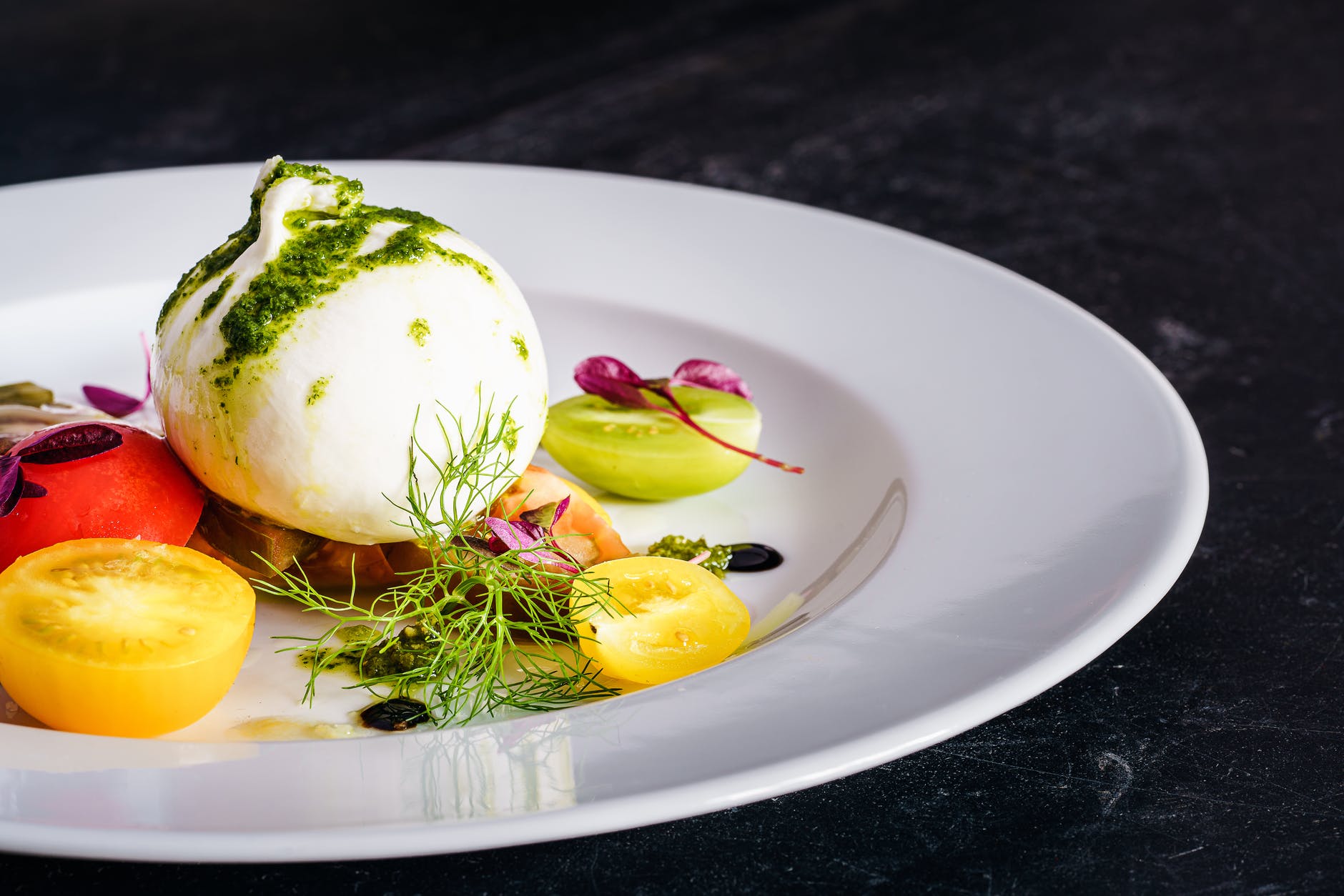
Vego to vegan
The majority of these users decided to go vegetarian for a while before avoiding all animal products. Some vegans have stuck to vegetarianism for as long as 8 years, while others gave themselves only a veggie week before transitioning to veganism.
“I went vegetarian first, and vegan 8 years later – It took me a month to slowly cut out all animal products from my diet”
“I was vegetarian for about two months beforehand, it was quite easy as I never liked the taste of meat to begin with… it wasn’t such a big sacrifice”
Why is this particular journey so common? The reason can be boiled down to two words: gradual progression. Vego to vegan is easily the easiest, most stress-free way of going vegan, as the gradual process of elimination will ensure the most minimal amount of “shock” to your body - especially if you’ve been eating quite a lot of animal products your whole life.
Going vegetarian first allows to take action towards your ultimate goal while leaving you with enough room to research veganism thoroughly and eliminating animal products step by step.
Vegan-ish first
For some, the journey wasn’t so linear.
A couple of users reverted to their meat-eating ways a few years after going vegetarian, or started introducing dairy and eggs back into their diet a year after going vegan.
“I went vegan almost overnight, but I had a history of being on/off vegetarian for months at a time”
“I went vegan right away, but it took me about a year to completely stop eating all animal products, especially when going to restaurants with non-vegan friends”
These are the vegan-ish, the people who for some reason or another, tend to go back and forth between diets before truly finding their way into the vegan lifestyle. Nothing exemplifies the vegan learning process quite like the vegan-ish!
Secret vegans
Finally, we have the secret vegans. This is a group of people that decided not to reveal their vegan lifestyle to others until much further down the road.
Four Instagram users identified as secret vegans for a while, taking up to a year before disclosing their vegan beliefs due to the fear of being judged by meat-eaters.
“I didn’t know all the answers at first, and I found myself feeling overwhelmed by meat-eaters when they would ask questions. It was the hardest part of transitioning for me.”
Excessive questioning and criticism from others is something new vegans have to prepare for, as the lack acceptance by family and friends can take a toll on many when first going vegan.
If you think you are not prepared for people judging your choices and debating your lifestyle, you might want to consider being a secret vegan until the time is right for you to come out!
But how long should it take me, I hear you ask?!
According to our poll, many vegans went vegan overnight, whilst a lot also went vegetarian first. Some were vegetarian for weeks, others for months and some for decades.
The length of time it will take will most likely depend entirely on your personal situation. Being able to cook new vegan meals is a big part of it. Do you have zero experience in the kitchen, besides microwaving some ready-meals? Do you live off of pizza and Chinese takeaway? If so, the transition to veganism is likely to take longer than the one of an expert chef.
There is no right or wrong way to go vegan, and whether it takes you two months or two years you will feel proud of yourself knowing you are taking active steps towards your goal.
Slow and steady wins the race.
Now, time to start eating vegan!
As you start transitioning to veganism, you’ll find that many nutritional facts and diet advice you’ve been exposed to your whole life might not hold true anymore.
Eliminating meat, fish, dairy, and eggs from your diet can make you wonder what is left for you to eat to be healthy and feel satisfied. The world of vegan food is varied, colorful, and exciting – you just have to know how to do it right and where to begin.
Make the transition stress-free
So, let’s get down to business and break down exactly where to begin when first transitioning to a vegan diet for the first time, and how to successfully do it stress-free.
Following the “slow and steady” approach, you want to make small, yet impactful changes to your current lifestyle. Aim for making one big change (such as cutting out dairy products or meat) every week to test how comfortable and satisfied you are feeling.
Here we list four tips that are meant to work for everyone, committed health-nuts and fried chicken lovers alike.
Add to your diet first
Restriction can be a scary word when going vegan. Try adding to your diet first, before taking anything away from it.
You can experiment with new plant-based foods and ingredients you might have never used before, such as tofu, tempeh or seitan. Add vegan meals to your standard diet and identify your favorites – they will become your new staples!
Use the swapping technique
Slowly start cutting out animal products from your diet, ideally aiming for one product to cut out each week.
For every product you start avoiding, find the plant-based substitute that works best for you. Start with meals like pasta, sandwiches, oatmeal, and soups as they are some of the easiest recipes to veganize.
This simple swapping technique will ensure you won’t miss out on your favorite meals, as almost every recipe can be tweaked to suit a vegan diet!
Discover vegan substitutes
So, what are the most common plant-based substitutes you can use? Get familiar with a handful of vegan ingredients that will make your swapping challenge fun and exciting.
Also look for vegan substitute products like vegan supplements (including vegan gummies)
Meat and meat products
Tofu, TVP, seitan, and tempeh have the benefit of being both delicious and healthy, working as perfect meat substitutes for all your favorite dishes. These products tend to soak up the flavor of whatever you are cooking them with, so don’t skimp on the spices!

Milk
There is an almost endless supply of non-dairy milks on the market. The most common plant-based milks are soy milk, oat milk, almond milk, coconut milk, cashew milk, and hemp milk.
Challenge yourself with trying all the ones you can get your hands on before deciding on a favorite!
Eggs
There are a few different ways you can make a homemade vegan egg substitute.
The cheapest and healthiest methods are mixing ground flaxseed with water or simply using chickpea water, also known as aquafaba. If you are looking for an egg substitute to use in baking, applesauce and ripe bananas will do the job just fine too!
Cheese
You might have already seen some vegan cheeses stocked in your local health food store, but if you are looking for a healthier option, try using nutritional yeast or making some homemade cashew cheese cream.
You can sprinkle nutritional yeast on top of pasta and popcorn, and use cashew cheese on toasted bagels, sandwiches, or creamy vegetable bakes.
Also, consider not labelling yourself while transitioning
While some people might find the label “vegan” empowering, taking this identity for your own as soon as you start transitioning might not be the best idea.
The existence of secret vegans alone shows us that there is still a lot of stigma and suspicion surrounding veganism.
The concept of veganism itself implies a certain level of commitment, and striving for perfection might be your downfall. Don’t rush into labelling yourself as vegan, and wait to get settled into the lifestyle first – experience and confidence will make you the vegan example you want to be!

Learning to cook vegan is key to transitioning
So, what kind of meals will you be making when first transitioning to veganism?
Here we list some simple ideas on what to eat when going vegan, which you can easily adjust to your taste and preferences along the way.
Start with simple vegan meals
The key to a delicious, satisfying vegan meal is simplicity and variety.
These examples are plant-based spins on meals you might already be making on the daily, so you won’t need any special ingredients or equipment to start your vegan diet straight away.
Grains, greens, and beans bowl
Bowls are the most convenient way of getting your daily greens, whole grains, and protein. The best part is that they are completely customizable, so switching ingredients every day will ensure you never get bored of this easy lunch!
If you don’t really know where to start, you can get some inspiration from No Meat Athlete.
The key is finding a whole grain that works for you, such as brown rice, quinoa or whole wheat pasta, adding your choice of roasted or pan-fried veg (the more colorful the better) and a serving of your favorite plant-based protein, such as kidney beans, chickpeas, tofu, or lentils.
These ingredients, paired with a tasty sauce, will make a filling and healthy meal that can keep in the fridge for days when cooked in bulk.
Stir-frys
Stir-frys are another example of an endlessly customizable dish that is incredibly tasty and quick to make.
Use either brown rice or noodles as your base, add your favorite veggie mix, tofu or tempeh, and a sprinkle of cashew nuts or sesame seeds on top. Many store-bought stir-fry sauces are accidentally vegan, so you can just pour a generous amount into your pan on a medium heat and call it a day, or even better - make your own sauce!
All you need for a finger-licking vegan sauce is soy sauce, rice vinegar, garlic, ginger, and some optional chopped up chilies.
Plant-based curries
A hearty curry paired with a bowl of rice makes for the perfect dinner meal to share with friends and family – you can show them just how delicious vegan food can be!
Some of the easiest and tastiest Indian curries to make are naturally plant-based, like a Potato Chickpea or a Red Lentil Curry. A vegan Thai green curry packed with tofu and peanuts is also a crowd-pleaser that will have everyone at the table coming back for more.
Experiment with making more than you need – curries, chilies, and soups are perfect to store in the fridge and save for a busy day.
Tasty wraps
Get a hold of a whole-wheat tortilla, stuff it with your favorite plant-based ingredients, and dig in – it’s just as simple as that!
Try spreading some smashed avocado or hummus on a warm tortilla, packing in the lettuce, spinach, tomatoes, and sweet peppers for a satisfying crunch. Then, fill the wrap with a mix of beans or crispy tofu, along with rice or quinoa if you’re looking for a more filling meal (vegan burrito, anyone?).
Wraps are a great meal to bring to work or school as they don’t need warming up, require very little preparation, and are easy to carry on the go.
But eating out as a vegan is also great
Eating out as a vegan can be challenging at first, and the number of restaurants you’ll be able to comfortably eat at will vary from country to country, city to city.
Download the HappyCow app for vegan eateries
As you start researching what options are available in your area, your first stop should be the online directory HappyCow, which conveniently lists all the vegan-friendly eateries close to your location – no matter where you live!
The app also lists vegan-friendly supermarkets and health stores you might want to check out when scouting for rarer plant-based ingredients.
And know how to eat with non-vegan friends
The time might come that you are invited to dining out by your non-vegan friends and relatives, or that you find yourself having to grab a quick lunch on the go.
Many restaurants now include a handful of vegan-friendly dishes, but you might not always be so lucky.
Your best bet in these situations is to identify “accidentally” vegan meals you can find in all eating spots such as French fries, salads, rice and beans, pasta, and potentially some varieties of bread rolls.
They might not make for the most exciting meal, but they’re always good to fall back on when no other option is available!
Finally, implement healthy plant-based diet principles
What does the vegan food pyramid look like? The key nutritional principles of a vegan diet are not that different from the ones of a standard balanced diet. Carbs should always make up the majority of your meals’ calories, followed by protein, healthy fats, and plenty of fruits and vegetables.
What changes in a plant-based diet is the source of those calories. Whole grains (and some refined grains in moderation) will be the building blocks of your diet, with an equal amount of root vegetables, green leafy vegetables, and fruit on the side.
Plant-based foods that are high in protein such as lentils, beans, tofu, peanuts, and seitan come right after carbs in your nutritional needs. Smaller amounts of healthy fats from nuts, seeds, avocados, and olive oil should also be included daily for optimal health.
Eat whole foods more than junk foods
As veganism continues to advance further into the mainstream, vegan junk food becomes tastier and more easily available. This is great news for those of us who love our burgers and pizza, as game-changing products like Beyond Meat substitutes, Ben and Jerry’s vegan ice-cream, and plant-based cheese are available in stores all around the world.
Experimenting with vegan junk food is incredibly helpful for new vegans, as transitioning from a standard diet full of treats to a whole-food plant-based diet might be very difficult for some.
Still, ensuring you are getting an adequate amount of nutrients is extremely important when transitioning to veganism. A whole-food plant-based diet will help you feel your best by reaping all the benefits of a diet heavy in vegetables, pulses, and fruit.
Allow yourself to have a small portion of your favorite “cheat meal”, in its vegan form, a couple of times per week. It will make your transition to veganism much smoother and enjoyable, while still ensuring you are getting those key nutrients from your whole foods!
Use the tasty, healthy, convenient rule
The key to making a vegan diet sustainable in the long term is to find flavors you love in all your meals while keeping them healthy, nutritious, and easy to make.
Of course, not every single one of your meals has to conform to this rule. As long as the majority of your diet is health-focused and whole-foods based, you will be feeding your body right.
Some staple foods such as pasta and bread are already suitable for vegans, and incredibly convenient to have around. You don’t have to give up your lunchtime peanut butter and jelly sandwich or your marinara pasta to be vegan!
And try to avoid temptations
After a few days into your new lifestyle, you’re going to start craving some of your favorite comfort foods. There’s no need to panic – the cravings will die down soon.
Still, it might be tempting to run to the store and indulge in your favorite non-vegan snack, or ring your local pizza restaurant for a double cheese meat feast pizza. Where is the harm, if it’s just that one time?
But the truth is that changing your eating habits is no different than quitting smoking or committing to exercising every day – it’s the consistency and repetition that breaks the habit, so every slip-up counts.
If breaking old habits is something you have found yourself struggling with in the past, we recommend taking the time to nurture this skill with some great reads such as Charles Duhigg’s The Power of Habit.
To start things off with, avoid temptations by clearing out your pantry and fridge from all animal products, and establish some accountability for your actions by telling a supportive friend or family member about your vegan journey.
Ensure you are getting key nutrients
Carbs will make up the majority of your daily food intake. Still, there is such a thing as focusing too heavily on them.
Including a serving of protein with every meal is imperative to make sure your body is getting what it needs (and you may want to use a vegan protein powder). A meal that doesn’t balance all three macronutrients (carbs, protein, and fat) is also not going to be filling, so you’ll find yourself reaching for more food in a heartbeat. This is where the “starving vegan” stereotype comes from!
Aim to create a plate that is 60% carbs, 25% protein, and 15% fat with each meal, every day.
Consider using a nutrition tracker
Using online nutrition calculators like Cronometer is the best way to make sure your body is getting what it needs.
This is a vital step when transitioning to veganism for the first time, as you might not be used to tracking your daily nutrients and calorie intake. Many people tend to under-eat when going vegan, and you want to avoid this at all costs – fatigue doesn’t make for a happy and healthy vegan!
You don’t have to keep tracking your meals forever, a week or so will be enough for you to figure out what you should be eating intuitively.
And understand you 100% need to supplement
Everybody, regardless of the diet they follow, should make sure to supplement key nutrients daily.
Still, it is incredibly important for new vegans to make sure they supplement regularly, as abruptly cutting out your regular sources of these vitamins might lead to some unwanted health problems.
All vegans should supplement vitamin B12 and omega-3. Most vegans should supplement vitamin D and iodine, and depending on your specific health needs you might also want to supplement iron, zinc, calcium and magnesium – or any other nutrient you may need for your personal health requirements.
An essential vegan multivitamin and other supplements. as required for each nutrient daily will give you the best energy, mental focus, and mood of your life.
Remember - go vegan your own way!
Becoming vegan can be a major change in your life. Mastering this change will be more or less difficult depending on where you live, who you surround yourself with, and the kind of person that you are when it comes to adaptation and transformation.
Some people find going vegetarian first incredibly helpful, while others seem to prefer quitting all animal products overnight. The best way of going vegan is simply the one that fits you best!
So don’t be afraid of slipping up or making mistakes along the way – your commitment and motivation to pursuing veganism will be your guiding light.

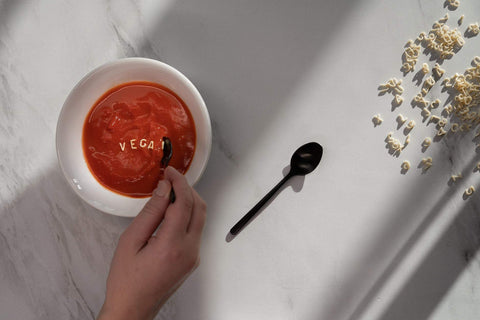




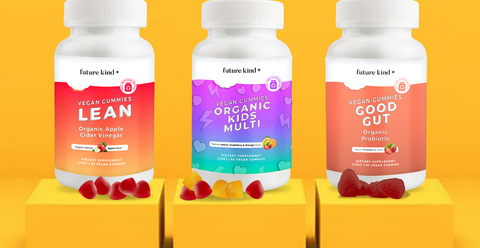
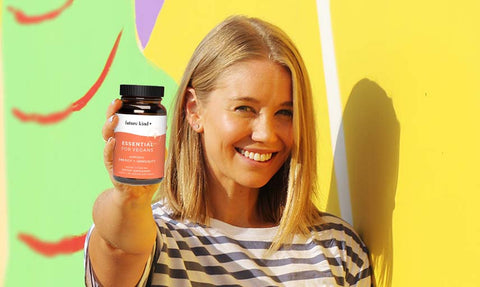
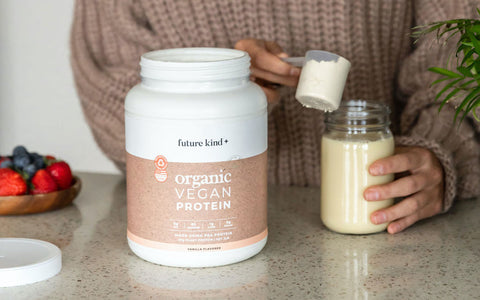
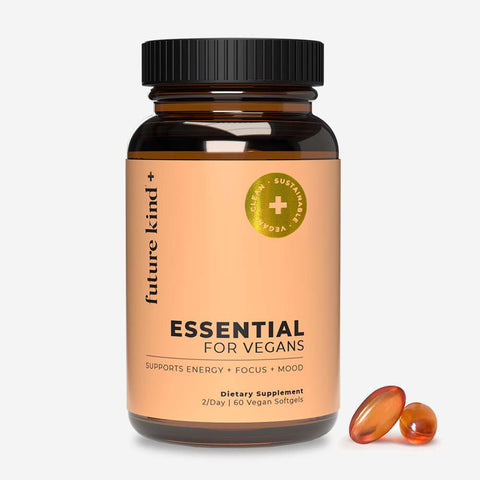
Comments (0)
There are no comments for this article. Be the first one to leave a message!